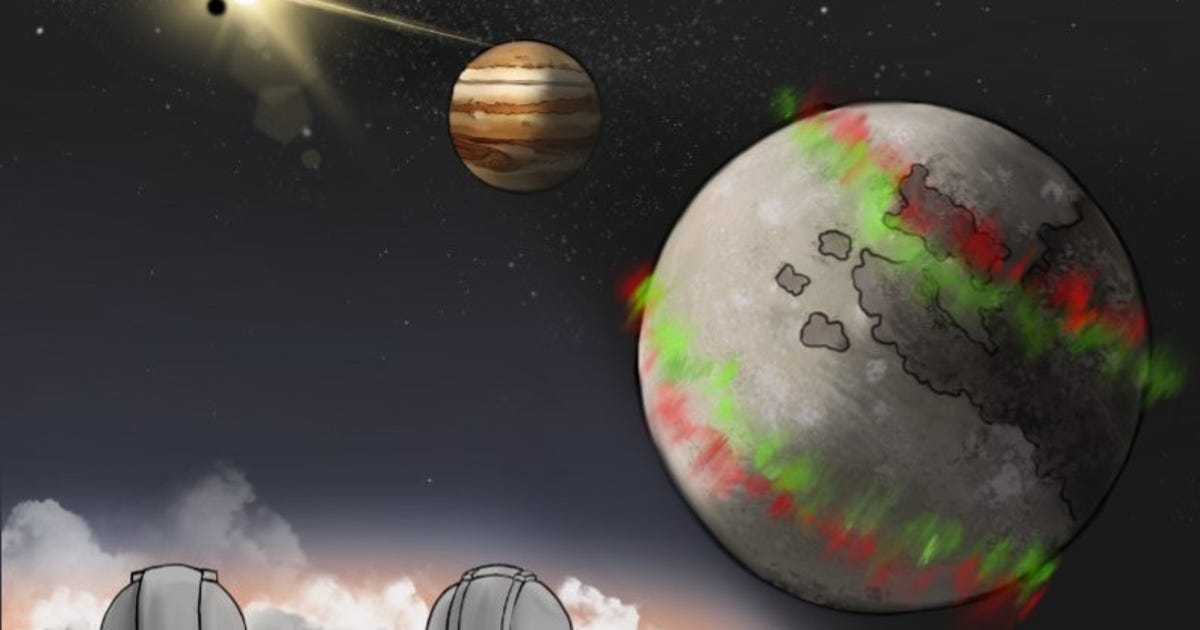Stunning Auroras Light Up Jupiter’s Biggest, Most Majestic Moons
A team of astronomers observing Jupiter’s Galilean moons have found that four of these intriguing worlds in our solar system also boast brilliant auroral light shows.
Having initially been discovered by Galileo in the early 1600s, the quartet of satellites orbiting Jupiter — Io, Ganymede, Callisto and Europa — are also the gas giant’s largest. Io is the most volcanically active world we know of in our corner of the cosmos, and the other three are suspected of harboring liquid oceans beneath their surface layers.
But now, after using multiple observatories to study the Jovian moons, astronomers have added faint auroras to the list of features worth investigating further.
“These observations are tricky because in Jupiter’s shadow the moons are nearly invisible. The light emitted by their faint aurorae is the only confirmation that we’ve even pointed the telescope at the right place,” explains CalTech professor Katherine de Kleer in a statement.
de Kleer is lead author on one of two studies on the discovery published Thursday in the Planetary Science Journal.
Hubble and James Webb Space Telescope Images Compared: See the Difference
See all photos
The atmospheres on these moons are thinner than Earth’s, leading to dancing lights that are redder than the greens we’re more likely to see from the aurora borealis and aurora australis here on our planet. Volcanic gases and dust on Io also add more sodium to the atmosphere, lending aurorae there a more yellow-orange-ish glow. The ochre display could be up to 15 times brighter than what we see on our planet, the scientists estimate.
“The brightness of the different colors of aurora tell us what these moons’ atmospheres are likely made up of,” adds de Kleer. “We find that molecular oxygen, just like what we breathe here on Earth, is likely the main constituent of the icy moon atmospheres.”
On that note, according to a press release on the study, oxygen also activates auroral lights in infrared wavelengths on Europa and Ganymede — redder even than the human eye can physically see.
We can continue to expect more details on these weird worlds as the James Webb Space Telescope and missions like Juno and JUICE target them and help us evaluate humanity’s travel plans for the centuries to come.
For all the latest world News Click Here

